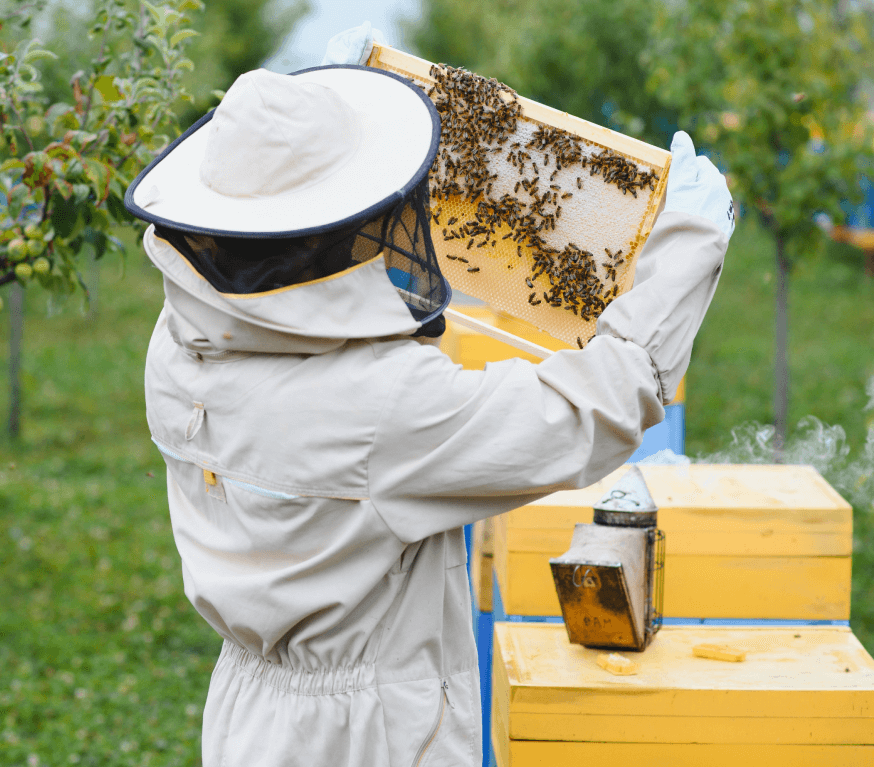Start Your Own Hive




Your Guide to a Buzzing New Adventure Begins Here
Beekeeping is a rewarding pursuit that brings countless benefits to both you and the environment. Whether you dream of a flourishing backyard garden or just want to harvest your own honey, starting your own beehive is extremely rewarding, but isn’t without its challenges—and that is why we are here to support you every step of the way, with expert advice and quality equipment.
Why Start a Beehive?

Pollination Powerhouse
Bees are nature’s most efficient pollinators. With your own hive, expect your garden, orchard, or farm to thrive.

Harvest Pure Honey
There’s nothing like enjoying honey straight from your own hive. We offer all the supplies you need to collect, store, and savor your home-harvested honey—simply add a bee package and watch the magic happen.

Support Biodiversity
Each hive supports local pollinator populations, and by setting up your own, you’re helping preserve these vital creatures.

Natural Wax and Other Products
Expand your beehive’s bounty with beeswax for candles, balms, and crafts. Our equipment kits make it easy to gather and use beeswax and propolis at home.

Environmental Stewardship
Beekeeping teaches sustainable practices and connects you to the rhythms of nature. Let us help you get started with eco-friendly hives and supplies.

Personal Fulfillment
The world of bees is endlessly fascinating. From the moment you “crack” the lid on your first hive inspection, you will begin to understand why beekeeping is a healthy addiction.

Community Connection
Be part of a larger network of beekeepers. We offer resources, advice, and all the gear you need to join the buzzing community.

Steps to Starting Your Own Beehive
Embarking on beekeeping involves several important considerations to ensure your colony thrives and remains healthy. Below are key steps and practical information to guide beginners.
Educate Yourself
Before setting up a hive, familiarize yourself with bee biology, hive maintenance, and seasonal patterns. There are a variety of books, online resources, and local beekeeping associations that offer essential knowledge for both new and experienced beekeepers.
Choose the Right Location
The location of your hive is crucial for the bees’ health and productivity. Select a spot that receives sunlight, is sheltered from strong winds, and has nearby sources of pollen, nectar, and water. It’s also important to be aware of local regulations and to consider neighbors when placing hives.
Gather Your Equipment
Beekeeping requires specific tools and protective clothing. The main components include:
- Beehives: Standard options like Langstroth, Top Bar, and Warre hives. Materials should be weather-resistant and safe for bees.
- Protective Gear: Bee suits, veils, gloves, and boots help prevent stings and ensure safety during hive inspections.
- Hive Tools: Smokers, scrapers, and brushes for managing and inspecting hives.
- Frames and Foundation: Frames help bees build comb, which is necessary for brood and honey storage.
- Bee Feeders: Useful for supplementing bees’ food sources, especially in early spring or during a dearth.
Obtain Bees
Beginner beekeepers typically start with package bees, nucleus colonies (nucs), or occasionally, swarms. Each option has its own setup requirements and advantages. Package bees are shipped and installed in empty hives, while nucs include frames and an established queen. Local beekeeping groups can offer guidance on safe sourcing.
Install Your Bees
Follow best practices for safely introducing bees to their new hive. This involves transferring bees and their queen, ensuring adequate food and water, and monitoring initial activity to confirm the colony is settling in.
Regular Inspections
Inspect the hive every 7–14 days during the active season. Look for healthy brood patterns, signs of disease, adequate food stores, and the presence of the queen. Record observations to track colony development.
Ongoing Care and Feeding
Monitor food and water supplies, especially during periods of limited forage. Supplemental feeding with sugar syrup or pollen patties may be necessary in some climates or seasons.
Pest and Disease Management
Common pests and diseases include Varroa mites, wax moths, and foulbrood. Effective management combines regular inspections, physical barriers, and, when necessary, approved treatments. Staying informed about local threats and integrated pest management practices is essential.
Harvesting Honey
Honey harvesting should balance human consumption with the bees’ needs for winter stores. Use extractors and strainers to collect honey, taking care to leave sufficient supplies so the colony can survive until spring.
Preparing for Winter
As temperatures drop, reduce hive entrances and insulate if needed. Supplemental feeding and ensuring adequate honey reserves are important steps. Monitoring the colony’s strength throughout fall and winter is key to survival.
Tips for Success
Beekeeping is a blend of science, community, and stewardship. Successful practitioners continue learning and often connect through local clubs, workshops, and online forums to share experiences and advice.
- Start small—one or two hives are perfect for beginners. Shop our beginner bundles for savings and convenience.
- Connect to a community— The beekeeping community is usually always friendly and eager to help.
- Keep learning—explore our blog and guides for expert tips tailored to every season.





